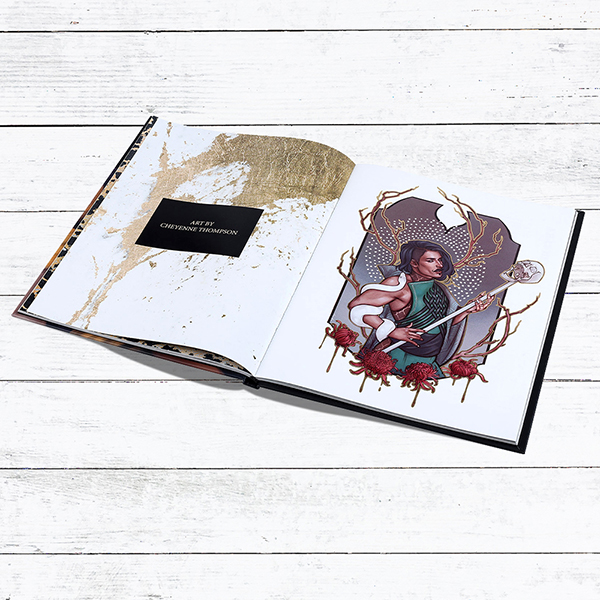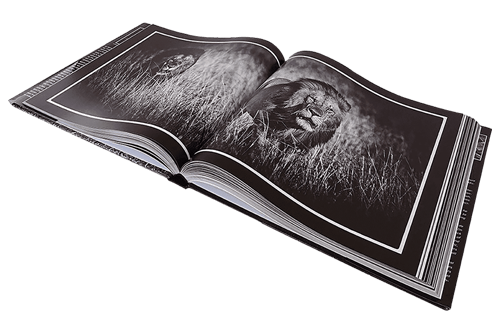Common Questions About Printing an art book Answered
Browsing the Globe of Art Book Printing: Tips and Techniques for a Remarkable Complete
When it pertains to art book printing, you need to blend creative thinking with technological knowledge for the best outcomes. You'll deal with selections that can make or damage your task, from picking the best printing technique to choosing paper that enhances your artwork. Prior to you finalize anything, there's a necessary step that can save you from expensive errors. Let's discover what that is and how it can raise your art book.
Recognizing the Printing Refine
When you immerse on your own on the planet of art book printing, understanding the printing process is critical for accomplishing your preferred results. Begin by acquainting on your own with different printing techniques, like digital and balance out printing. Each approach has its toughness, so consider your job's scale and budget.
Following, focus on color management. Make sure your pictures are in the right shade profile, as this affects just how they'll appear in print. You'll additionally intend to select the best resolution-- 300 DPI is typical for premium prints.
Don't overlook the value of proofing. Constantly request a proof before the final print go to catch any errors or discrepancies in shade. Lastly, bear in mind that timing issues. Talk about production timelines with your printer to assure your job remains on timetable. Understanding these aspects can greatly improve the top quality and total appearance of your art book.
Choosing the Right Paper
Picking the right paper can substantially affect the general look of your art book. You'll wish to review variables like weight, structure, and coating. A larger weight paper can give your pictures an extra luxurious appearance, while lighter documents may feel extra delicate.
Texture plays an essential function too; shiny paper boosts shades and detail for vibrant pictures, while matte paper offers a much more suppressed and creative appearance. Believe regarding how you desire your art work to be perceived-- do you choose sharp contrasts or softer sides?
Don't forget to examine samples prior to making a decision. This will assist you visualize how your art interacts with different documents. Remember, the best option can elevate your book from average to phenomenal, guaranteeing your creative vision radiates through in every web page. So take your time, check out options, and pick intelligently for the ideal results.
Checking Out Binding Options
When it involves binding your art book, you've obtained several alternatives to ponder that can affect both the appearance and feeling of your job. Assume about the sturdiness features you require, in addition to the expense effects of each binding technique. Choosing the right binding can raise your artwork and ensure it lasts for several years ahead.
Sorts Of Binding Approaches
There are several binding approaches to ponder for your art book, each offering special advantages and appearances. If you're looking for a smooth surface, perfect binding is an excellent option, supplying an expert look with a sturdy spine. For an extra artistic touch, take into consideration spiral binding; it enables your book to lay flat, showcasing your artwork perfectly. If you favor a typical feeling, instance binding provides you a sturdy hardbound choice, perfect for top quality prints. Saddle stitching is one more option, best for thinner books and using a clean and minimalistic look. Each binding approach has its charm, so think concerning your book's objective and target market to select the one that ideal enhances your vision.

Picking Sturdiness Attributes
After considering the numerous binding methods, it's time to concentrate on resilience functions that can enhance the long life of your art book. If you anticipate your book to withstand frequent handling, choose for products like laminated covers or covered paper, which resist wear and tear. Focus on these attributes to maintain your art book looking pristine.
Price Implications of Binding
While selecting a binding choice for your art book, it's important to consider how each selection impacts your budget plan. Saddle sewing is extra economical, optimal for smaller sized books, yet it may not fit larger jobs. Eventually, picking the right binding choice can boost your art book's presentation without damaging the bank.
Designing for Print
When designing for print, you require to prioritize quality and visual influence to properly showcase your artwork. Begin by picking a color scheme that complements your items, ensuring it equates well theoretically. Remember that shades may appear in a different way in print than on-screen, so choose shades that keep vibrancy when printed.
Usage high-resolution pictures to avoid pixelation; go for at least 300 DPI for peak top quality. Consider your typography very carefully-- choose typefaces that improve your art without subduing it. Preserve a balance in between message and visuals, ensuring that neither sidetracks from the various other.
Take note of design and white space, as these aspects lead the audience's eye and produce an unified flow. Finally, think concerning the dimension and dimensions of your book; it needs to boost your artwork, not constrain it. By more info concentrating on these aspects, you'll create a sensational print style that astounds your audience.
Proofing Your Art Work
Once you've finalized your style, it's time to proof your art work to verify every little thing looks as meant. If your art work is lively on-screen, however plain on paper, adjustments may be needed.
Print a test proof to see exactly how your layout translates to paper. Make certain your artwork sticks to any kind of details standards your printer calls for, such as bleed and cut lines.
Collaborating with a Printer
When you're prepared to print your art book, locating the appropriate printer is vital. You'll need to plainly communicate your vision and recognize the printing specifications to ensure every little thing turns out as expected (art book). Let's check out exactly how to make this process smooth and successful
Selecting the Right Printer
Picking the best printer can make all the distinction in bringing your art book vision to life. Research study regional and on the internet printing firms, paying interest to their profiles and client testimonials. You want a printer experienced in art publications, as they'll understand the nuances of reproducing your artwork faithfully.
Connecting Your Vision
To ensure your art book comes out equally as you imagine, it's essential to communicate your vision clearly with your printer. Begin by sharing your imaginative idea, including motifs, colors, and any particular components you desire highlighted. Review the general feel you're going for, whether it's contemporary, conventional, or progressive. Be open about your budget plan and timeline; this helps your printer provide sensible choices. Don't hesitate to share samples or referrals that motivate you. Ask inquiries and see to it you comprehend their procedures, as this builds a collective relationship. Lastly, develop regular check-ins during production to make specific whatever lines up with your assumptions. Clear communication can change your vision into a substantial work of art.

Understanding Printing Requirements
With your vision plainly articulated, it's time to concentrate on the technical side of printing your art book. Understanding printing requirements is important for accomplishing the ideal outcome. Next off, think about more info the book's measurements-- typical sizes are frequently much more economical, but personalized sizes can improve your one-of-a-kind style.
Advertising Your Art Book
Marketing your art book properly can make all the distinction within your audience and improving sales. Begin by identifying your target audience. Are they art lovers, collectors, or students? Tailor your messaging to resonate with them. Make use of social networks platforms like Instagram and Pinterest, where visuals shine. Showcase your artwork, share behind the curtain material, and engage with your followers through tales and blog posts.
Consider hosting a launch occasion or getting involved in art fairs to link with prospective customers straight. Work together with influencers or blog owners in the art neighborhood to expand your reach. Don't ignore the power of email marketing; construct a newsletter to keep interested viewers updated.
Ultimately, leverage online marketplaces and your web site for straight sales. Offer minimal editions or special promos to produce seriousness. By integrating these techniques, you'll raise exposure and drive sales for your attractive art book.
Regularly Asked Concerns
What Is the Ordinary Expense of Art Book Printing?
The average expense of art book printing differs extensively based upon variables like size, page matter, and materials. Normally, you're considering anywhere from $10 to $50 or even more per book, depending on your options.
The length of time Does the Printing Refine Usually Take?
The printing process usually takes regarding 2 to 4 weeks, relying on the task's intricacy and quantity. You'll need to consider layout, proofing, and possible revisions to assure every little thing fulfills your assumptions.
Can I Print a Limited Edition of My Art Book?
Yes, you can print a restricted edition of more info your art book. Just make a decision just how several copies you want, select a quality printer, and ensure you have actually obtained the appropriate materials to produce an unique feel.
What Data Formats Are Best for Printing My Artwork?
For publishing your artwork, usage high-resolution files like TIFF or PDF. These styles keep high quality and color accuracy. Avoid JPEGs for last prints, as they can lose information. Always examine your printer's specs for finest outcomes.
How Can I Guarantee Color Precision in My Printed Reserve?
To ensure color accuracy in your printed book, use an adjusted screen, soft evidence your files, and pick a reputable printing solution. Likewise, take into consideration using RGB or CMYK color modes as required for your art work.